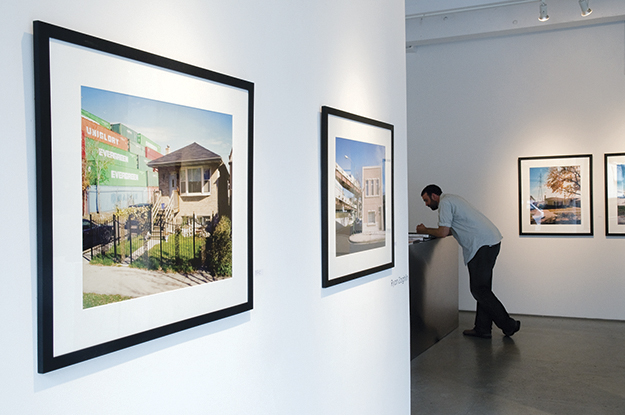The art of democracy
October 12, 2008
With expansive brush strokes and a keen eye for substance, the artist community has always been on the forefront of addressing an infinite canvas of social and political issues. Ranging from the environment and healthcare to immigration and poverty—it seems this election season offers no exception.
As Chicago Artists Month enters its 13th year exhibiting in more than 200 galleries, museums, cultural centers and arts buildings strewn throughout more than 40 Chicago neighborhoods, artists are challenged to provoke visitors with this year’s “Artists and Issues that Matter” theme, running through October.
“People can see artists’ work not just in terms of color, form and shape, but also in terms of where the artist is coming from and where his or her concerns are,” said Cynthia Quick, director of program development at the Chicago Department of Cultural Affairs. “We hope that people will come away from this with stimulating conversation.”
Quick, who is also the director of the city-operated, month-long program, said the mission of Chicago Artists Month is to not only increase the visibility of Chicago artists, but to spread awareness of artists in communities and neighborhoods that may be lesser known.
“It’s like a microcosm of what happens in artists’ communities over the year in many locations and areas … it brings everyone together,” Quick said.
The large collective of all-inclusive artists can be a double-edged sword, however, said Olga Stefan, executive director of Chicago Artists Coalition.
Chicago Artists’ Coalition, which originally started the Chicago Artists Month program 13 years ago, let Chicago’s Cultural Department take over the collective of open exhibits to help spread its capacity and market the programs to a wider audience, she said.
The goal of the program has always been to ensure all of the artists participating in the gallery and art shows are highlighted in some capacity while trying to connect and engage artists with visitors in a more dynamic and direct fashion, Stefan said.
Stefan said she hopes Chicago Artists Month doesn’t expand beyond capacity while trying to highlight hundreds of artists or grow out
of its defining mission statement.
“It has become really hard for the public to discern which events to attend and where to go,” Stefan said. “Smaller venues tend to get lost in this mix and the huge amounts of activity.”
The largest exhibition of local artists is held by Chicago Artists’ Coalition’s Chicago Art Open, located at Merchandise Mart, 222 Merchandise Mart Plaza. Featuring more than 300 artists, including students from local colleges such as Columbia, the 11th annual Chicago Art Open encompasses a wide range of mediums including painting, printmaking, sculpture, mixed media and installation, to name a few, which runs until Oct. 21.
Stefan said one of the ways she quantifies success at the art open is by making sure participating artists and emerging art students network with collectors, galleries, curators and other art professionals with the possibility of selling their work or being offered further exhibitions.
“For us, that’s success right there,” Stefan said. “[It’s in] knowing that our artists are developing their careers.”
For those wanting the full experience of Chicago Artists Month, Quick said she recommends any of the popular self-guided, neighborhood art walks, especially those in the Pilsen and Bridgeport neighborhoods that run during the weekends of Oct. 18 and Oct. 24, respectively.
“Neighborhood walks will be opening their studios to give people an inside look, behind the scenes,” Quick said. “It allows the public to both discover the community while they are discovering artists in their galleries.”
The Carroll Albany Arts Building, 319 N. Albany Ave., in Garfield Park will exhibit its highly anticipated open studio event on Oct. 26, which Quick said she recommends for newcomers.
“This exhibit has a wonderful array of artists ranging from sculptors and glass artists to painters and conceptual artists in a true reflection of the variety of working artists in the city,” she said.
This year saw many new exhibitions reflecting the art scene of Chicago, one of which at the Center on Halsted, 3656 N. Halsted St.
“Queer Eye on a Diverse Nation,” which runs until Nov. 15 at the North Side Gay, Lesbian, Bisexual, Transgender community center, features what Chicago Artists Month officials describe as a look at major issues facing the nation through the lens, pens and brushes of LGBT artists.
Curator and artist David Joseph said the Center on Halsted’s exhibit deals with political, as well as personal, issues expressed through various mediums. While Rob Porazinski’s series of drawings deals with issues such as corporate greed and perceptions of sexuality, John Gress, a photojournalist, will display photos he’s taken on the campaign trail and from the recent Gay Olympics, for example.
“But they are not simply gay and lesbian issues; they are issues we are all thinking about,” Joseph said. “We want to get people to think—to think about the election, how they spend their money and how they view different people.”








